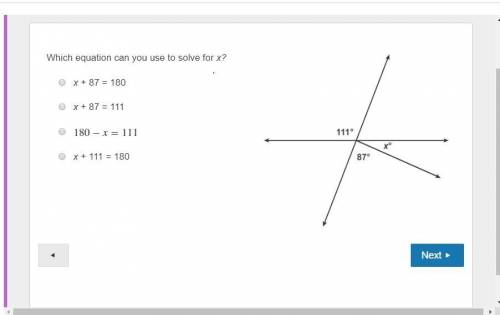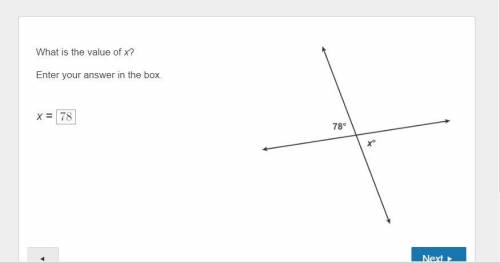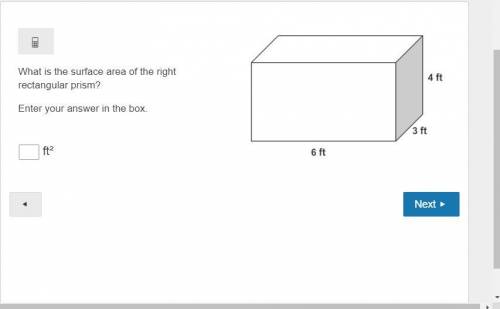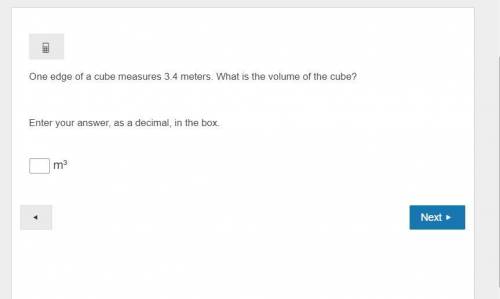Which equation can you use to solve for x?
x + 87 = 180
x + 87 = 111
<...

Mathematics, 27.05.2020 06:58, jcduarte
Which equation can you use to solve for x?
x + 87 = 180
x + 87 = 111
180−x=111
x + 111 = 180
The figure contains a pair intersecting lines. One of the four angles formed by the intersecting lines is labeled 111 degrees. The angle opposite and not adjacent to this angle is broken into two smaller angles by a ray that extends from the point where the two lines intersect. One of these smaller angles is labeled 87 degrees, and the other smaller angle is labeled x degrees.






Answers: 2
Other questions on the subject: Mathematics

Mathematics, 21.06.2019 18:00, amandaclark255
Last year, a state university received 3,560 applications from boys. of those applications, 35 percent were from boys who lived in other states. part a)how many applications did the university receive from boys who lived in other states? part b)applications to the university from boys represented 40percent of all applications. how many applications did the university receive in all? i don't how to do part b so me and plz tell how you got your answer
Answers: 1

Mathematics, 21.06.2019 21:30, luckilyalexa
Your company withheld $4,463 from your paycheck for taxes. you received a $713 tax refund. select the best answer round to the nearest 100 to estimate how much you paid in taxes.
Answers: 2

Mathematics, 21.06.2019 21:30, gonzalezashley152
In a test for esp (extrasensory perception), the experimenter looks at cards that are hidden from the subject. each card contains either a star, a circle, a wave, a cross or a square.(five shapes) as the experimenter looks at each of 20 cards in turn, the subject names the shape on the card. when the esp study described above discovers a subject whose performance appears to be better than guessing, the study continues at greater length. the experimenter looks at many cards bearing one of five shapes (star, square, circle, wave, and cross) in an order determined by random numbers. the subject cannot see the experimenter as he looks at each card in turn, in order to avoid any possible nonverbal clues. the answers of a subject who does not have esp should be independent observations, each with probability 1/5 of success. we record 1000 attempts. which of the following assumptions must be met in order to solve this problem? it's reasonable to assume normality 0.8(1000), 0.2(1000)%30 approximately normal 0.8(1000), 0.2(1000)% 10 approximately normal srs it is reasonable to assume the total number of cards is over 10,000 it is reasonable to assume the total number of cards is over 1000
Answers: 1
Do you know the correct answer?
Questions in other subjects:


Chemistry, 07.04.2020 23:01







Mathematics, 07.04.2020 23:01






